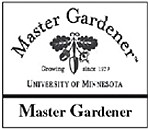February 13, 2004 at 10:27 a.m.
Rod Elmstrand, Regional Extension Director at Mora, and I will be teaching a class on raspberries. Elmstrand also has a pick-your-own strawberry and blueberry operation west of North Branch. I will be assisting him with the raspberry class. He will discuss preparing to plant and insect and disease control. I have raised raspberries for many years and will share with you some of my successes and failures. When gardeners call our office with questions about raspberries, I usually do the follow-up call. Questions on pruning, varieties and care are the most often asked. I will speak on these topics and take questions from those attending the class.
At the Bonanza we will be taking orders for Heritage and Killarney raspberries. Both varieties were developed in Minnesota. Because we are able to get bare root plants, we are able to sell them at a very reasonable cost. They are sold in bundles of 25 plants for $35. That’s less than $1.50 per plant. Last year gardeners, who had shopped around, stated that some garden centers in the Twin Cities area were charging $5-$8 per plant.
Killarney is a quite new Minnesota variety. It is termed “summerbearing,” which means they start bearing in early July and continue for about three weeks, depending on the weather. They are much like Boyne, which is an old standby, with larger and firmer fruit. The canes are short to medium and are spiny with lots of suckers. They are very hardy even in our unpredictable winters. Since they yield very well and tend to bear in clusters, the canes may weigh down if not supported.
Care of summer bearing varieties should include keeping the area clean throughout the life of the patch. Failure to do this allows the canes to grow all over the patch as well as the weeds. This results in competition for moisture and nutrients, and the berries will be smaller and inferior.
Pruning summer berries should be done in early spring. Remove dead canes and for an unsupported patch, prune back to about 3-feet tall. If you use supports, you may still want to prune them back to about 4-feet to make them easier to handle. If you prune too low, the plants will bush out and put their energy into that growth instead of the fruit.
There is a great deal of misunderstanding as to what is meant by an “everbearing” raspberry. They are also referred to as “fall bearing.” This refers to a plant that actually produces two crops—one in the summer on the old canes and one in the fall on new canes. The summer crop is produced in July and the fall crop begins to ripen around the end of August (depending on the weather) and continues until frost. The canes that produced the summer crop can be cut back to the ground. They will not produce again and usually die. The canes that produced in the fall can be cut back slightly and left to produce next summer. I cut some of my everbearing back to about 4-inches tall after the ground freezes. This will only give me a fall crop next year on those plants.
The advantages include that I don’t have to prune them and there is less chance of insects or disease in the fall. Another reason is that since the heritage grows so tall, they tend to lodge in the ground after heavy snow if they are not staked. The disadvantage to doing this is that if we have an early frost it will be a short harvest season.
The most popular everbearing raspberry is the Heritage. This variety is high yielding with quite large, firm berries that are somewhat dry. In fact, during very hot and sunny weather some of the berries may develop sun scald. This is a condition where the berry will lose its pigment and turn whitish colored. I believe this is due do the berries being more dry. I also believe this variety is worth the inconvenience.
There are other varieties of raspberries, but I mention these two because they are the varieties we will be selling.
Submitted by,
Jerry Vitalis
Chisago County
Master Gardener
+++++
Brochures are available for Bonanza 2004 “Garden Fever,” which will be held at Maranatha Church, in Forest Lake, March 6. Call or email to receive a brochure or if you are interested in being a vendor, 651-237-3080 or [email protected].
Forms are also now available to preorder bare root strawberry, raspberry, blueberry and grape plants. Many of these are cultivars developed at the University of Minnesota and used by commercial growers, but hard to find for home use.
You can view the brochure and order form on the web at: http://www.extension.umn.edu/coun ty/Chisago/news/brochure2004%20final.pdf
We regret to say there will not be plant clinics at our office this year. Many of you have stopped in or called Monday nights during office hours for help with your questions. The office space we are in at the Green Acres Care Facility is less than 25 percent the size of our old office by the Tanger Mall. There simply isn’t space available to have volunteers come in to work or for the public to be able to drop things off. Also, the paid Horticultural position was cut to 10 hours per week.
There will, however, still be Master Gardeners at the Lindstrom Farmer’s Market Saturday mornings and we are looking to have other locations where samples can be dropped off. Please be patient as we continue to work through these changes.





Comments:
Commenting has been disabled for this item.